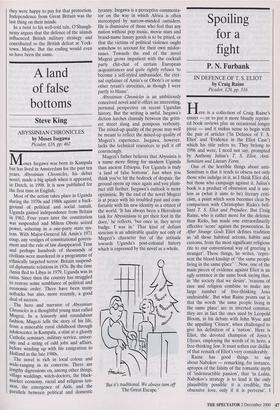The West Indian lobby
Robert Stewart
AN EMPIRE DIVIDED: THE AMERICAN REVOLUTION AND THE BRITISH CARIBBEAN by Andrew Jackson O'Shaughnessy University of Pennsylvania Press, £44.50, £18.50, pp. 351 The notorious Stamp Act of 1765, by which the British parliament imposed a direct tax on its colonies in the New World, raised the cry of `no taxation without repre- sentation'. It stands as the immediate cause of the swelling opposition to imperial rule that ended with the winning of American independence in 1783. The Stamp Act undermined the self-governing status of local assemblies, added to the financial burdens of the press and private citizens, and imperilled trial by jury (non-compliers were to be tried in vice-admiralty courts). The act bore more heavily on the West Indies than on the Thirteen Colonies. Yet, apart from riots in St Kitts and Nevis, it provoked only muted out cry there. And when war between Great Britain and America broke out in 1775, the West Indians remained loyal to the mother coun- try. Andrew O'Shaughnessy's excellent, well-ordered book tells us why.
One easy answer might seem to lie in the contrast between the Puritan colonists, refugees from religious persecution who established forms of frontier democracy in New England, and the more affluent adventurers who sought their fortunes on Caribbean slave-worked plantations. That explanation will not do. There is little in their background or social values to distin- guish Caribbean sugar-planters from the tobacco-growers of the Chesapeake. Yet Maryland and Virginia, and indeed South Carolina, joined the revolutionary cause. What made the difference? Patterns of settlement, demography and trade lie at the heart of the matter.
O'Shaughnessy notes that the architec- tural legacy of 17th- and 18th-century West Indian society includes few domestic or civic buildings. Few emigrants from Great Britain intended to stay in Jamaica or Bar- bados. They went to make a quick fortune and return home. The same may have been true of emigrants to the Chesapeake. But in the southern American colonies the white population was sustained by natural increase, doubling every 25 years. In the West Indies, deaths exceeded births among the white population. By 1776 there were fewer than 50,000 whites in the British Caribbean; in North America there were nearly two million. High mortality rates produced 'fragile family formations'. The white population, thanks to the insatiable demand of the sugar economy for black slaves, became a dwindling minority. By 1776 blacks outnumbered whites by more than 20:1; even in South Carolina, which had by far the highest number of black slaves in any North American colony, the numbers were equal.
The sugar-planters of the British Caribbean never really became a settler class. Sugar produced fortunes more quick- ly than tobacco and the sugar-planters returned home — where they were called 'pepper-pots' — to buy large landed estates. They had their portraits painted by Reynolds, their furniture designed by Chip- pendale, their grounds landscaped by Capability Brown. They had their children educated in England. In short, they never stopped being English. Between 1660 and 1776 there were 38 baronetcies created for West Indians, only six for North Ameri- cans. A high percentage of the planters were absentee landlords and they formed the politically powerful 'West Indian lobby', Tory nearly to a man, in Great Britain.
Having failed to sink roots in the New World, the Caribbean planters had their own viewpoint on conflicts that drove their northern brethren to take up arms against the mother country. North American colonists increasingly felt the weight of the imperial yoke on an expanding economy. Caribbean sugar-planters needed the monopoly of the British market to sustain their economy. Compared to French planters, they produced sugar at uncompet- itive prices. Unable to compete openly with French growers in European markets, they relied upon the imperial parliament to guarantee their exports to great Britain and to the Thirteen Colonies. The American colonists, who were forced to pay high prices for sugar and molasses coming from the British Caribbean, resented their inter- ests being 'sacrificed' on the Caribbean altar. The West Indian planters not only failed to join the revolutionary cause; the defence of their economic interests helped to stoke the fires of American rebellion.
To that grievance was added the storm over the costs of imperial defence. After the British victory in the Seven Years' war (1756-63) ended the French threat to the Thirteen Colonies, the British insistence that the colonists continue to pay taxes for British troops to defend them became a major obstacle to good relations between Westminster and the colonial assemblies of North America. Caribbean planters, how- ever, were in constant fear of slave revolts. They were surrounded by French-owned islands. They cried out for the protection of British troops and the British navy and they were happy to pay for that protection. Independence from Great Britain was the last thing on their minds. In a twist to his well-told tale, O'Shaugh- nessy argues that the defence of the islands influenced British military strategy and contributed to the British defeat at York- town. Maybe. But the ending would even so have been the same.



















































































 Previous page
Previous page